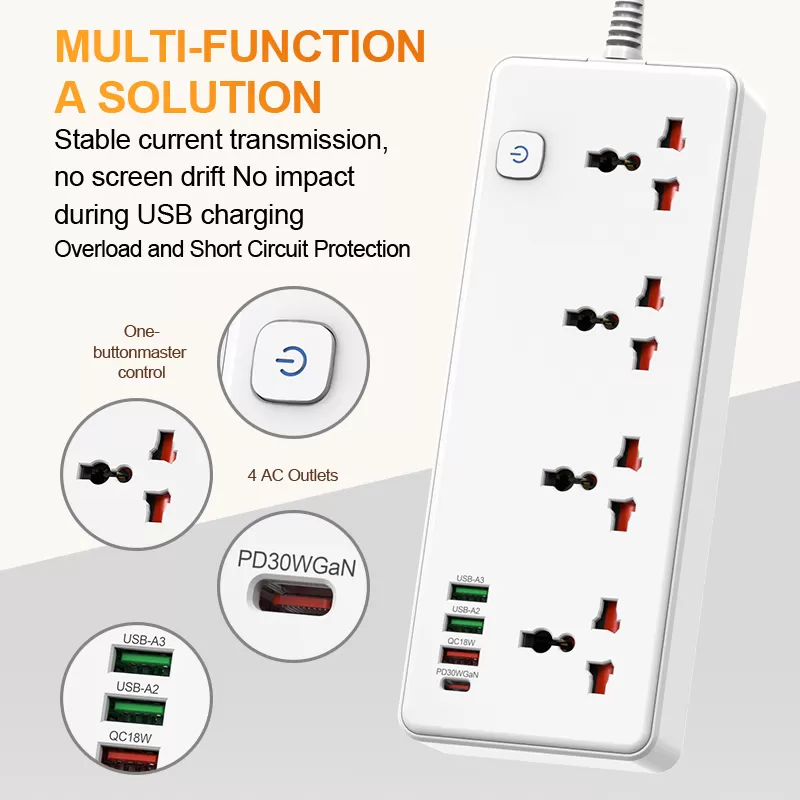Power strips are essential for daily electricity distribution, but misuse can lead to overloads or short circuits, risking fires or device damage.
1. Know Your Power Strip’s Rating
- Check Labels: Verify the rated power (e.g., 2500W) and voltage (e.g., 220V).
- Calculate Total Load: Total device power should not exceed 80% of the rating (e.g., 2000W for a 2500W strip).
- Dedicated Outlets for High-Power Devices: Appliances like ACs or microwaves (≥1500W) should plug directly into wall outlets.

2. Practical Tips to Prevent Overloads
- Distribute Loads: Separate high/low-power devices across multiple strips.
- Use Individual Switches: Turn off unused devices to reduce standby power.
- Inspect Regularly: Replace old strips or overheating sockets immediately.
3. Preventing Short Circuits
- Keep Dry: Avoid placing near water sources (e.g., kitchen counters, bathrooms).
- Check Cable Integrity: Replace frayed or damaged cords immediately.
- Certified Products: Choose strips with overload/short-circuit protection (e.g., UL/CE certified).
4. Common Mistakes & Fixes
| Mistake | Risk | Solution |
| Using All Outlets | Overheating from overload | Leave 1-2 outlets empty |
| Daisy-Chaining Strip | Fire hazard | Use wall outlets or longer cords |
| Ignoring Child Safety | Electric shock | Choose strips with child-safe shutters |
Conclusion
Safe power strip use = Proper load management + Regular maintenance + Certified products. Follow these guidelines to minimize risks and ensure safety at home or work.
Emergency Response
- Overload Smoke:
- Cut power immediately.
- Use a dry chemical fire extinguisher.
- Short Circuit Sparks:
- Do NOT use water.
- Turn off the main switch and call an electrician.